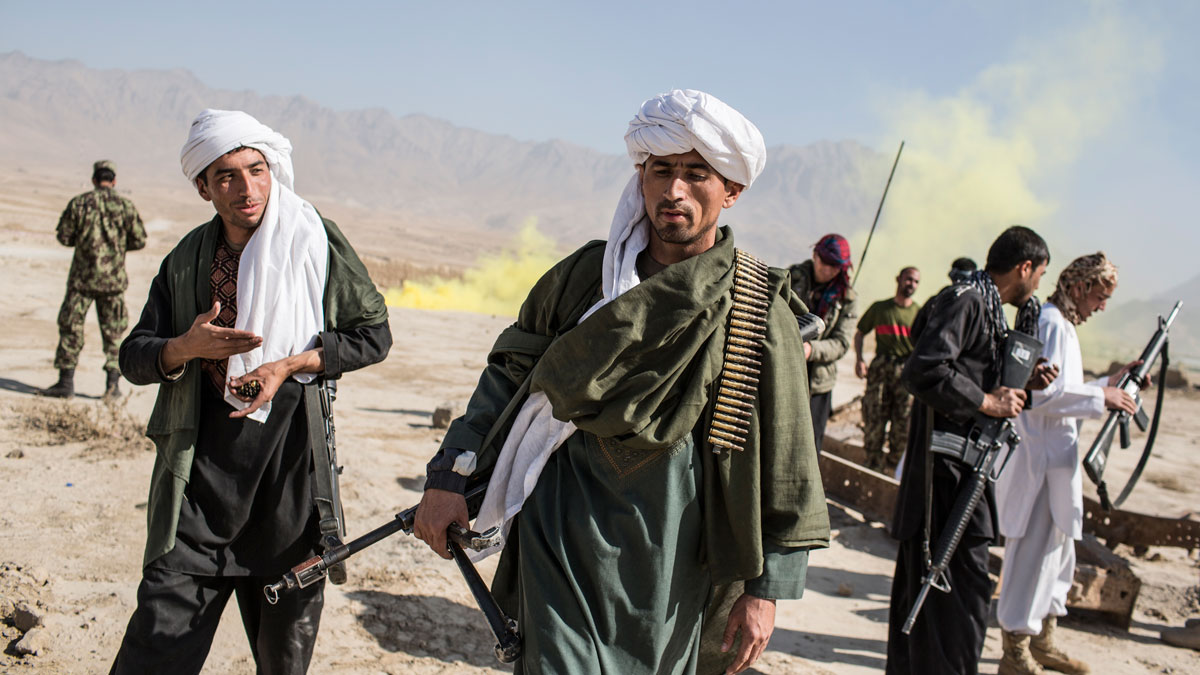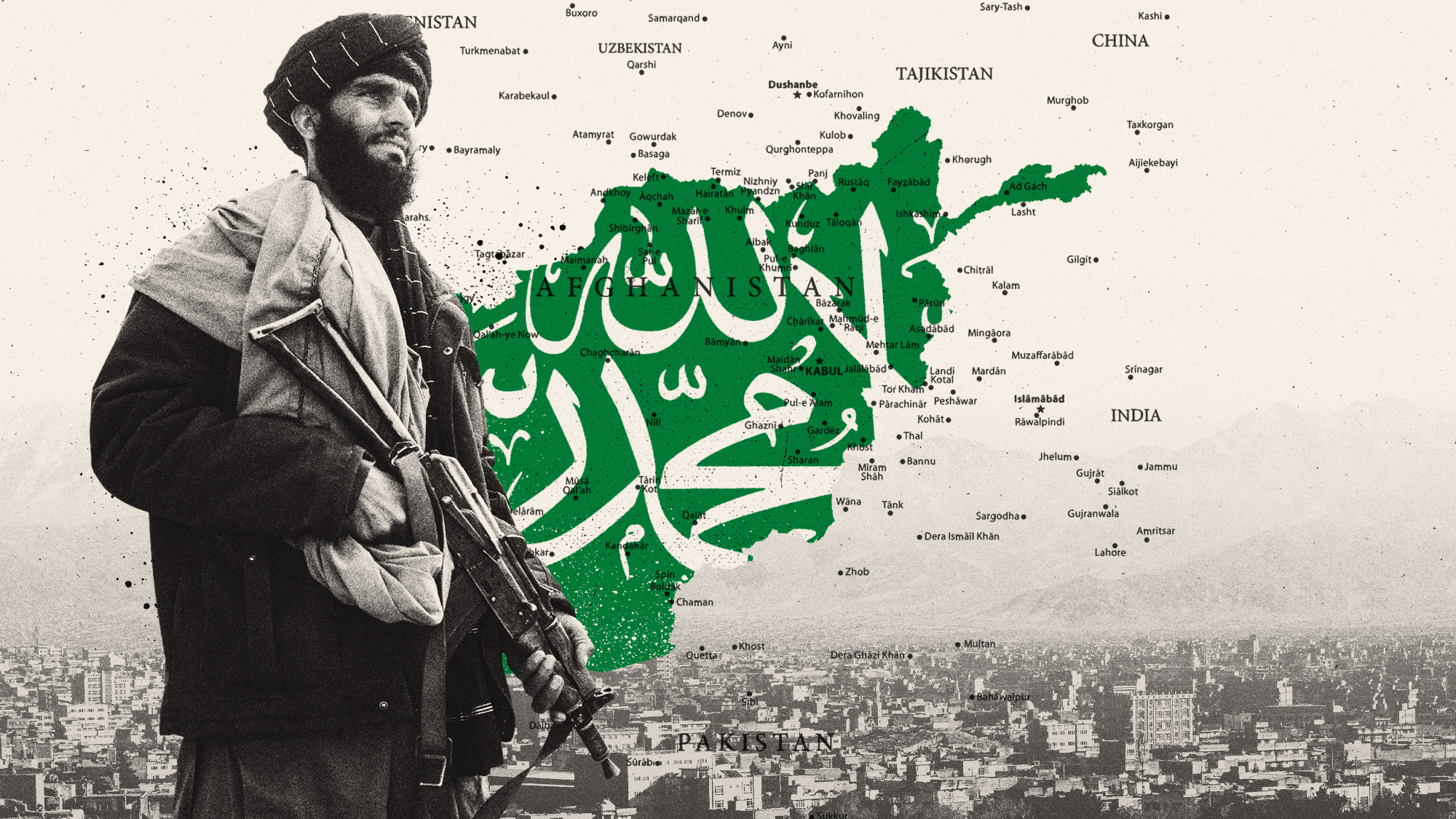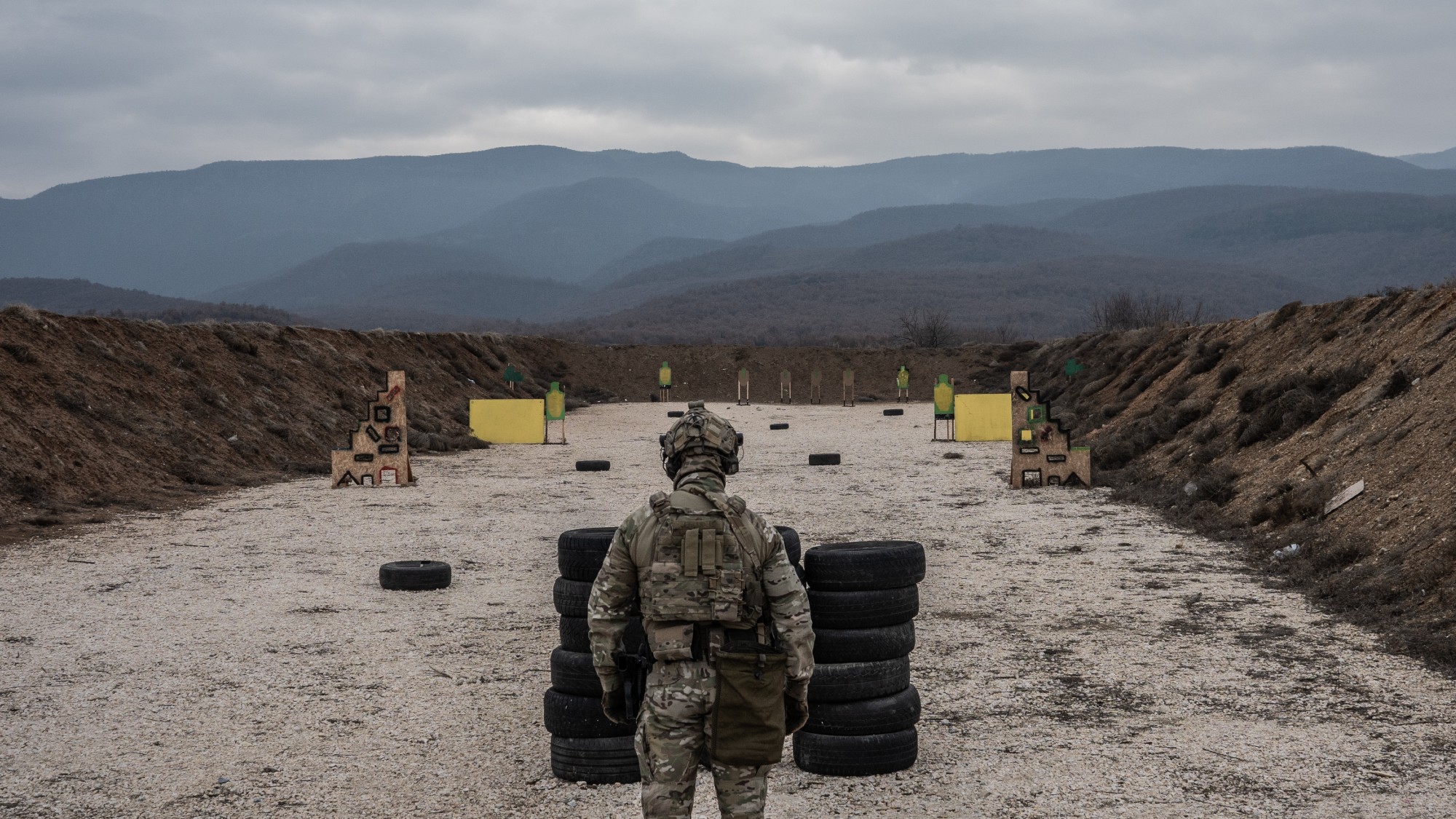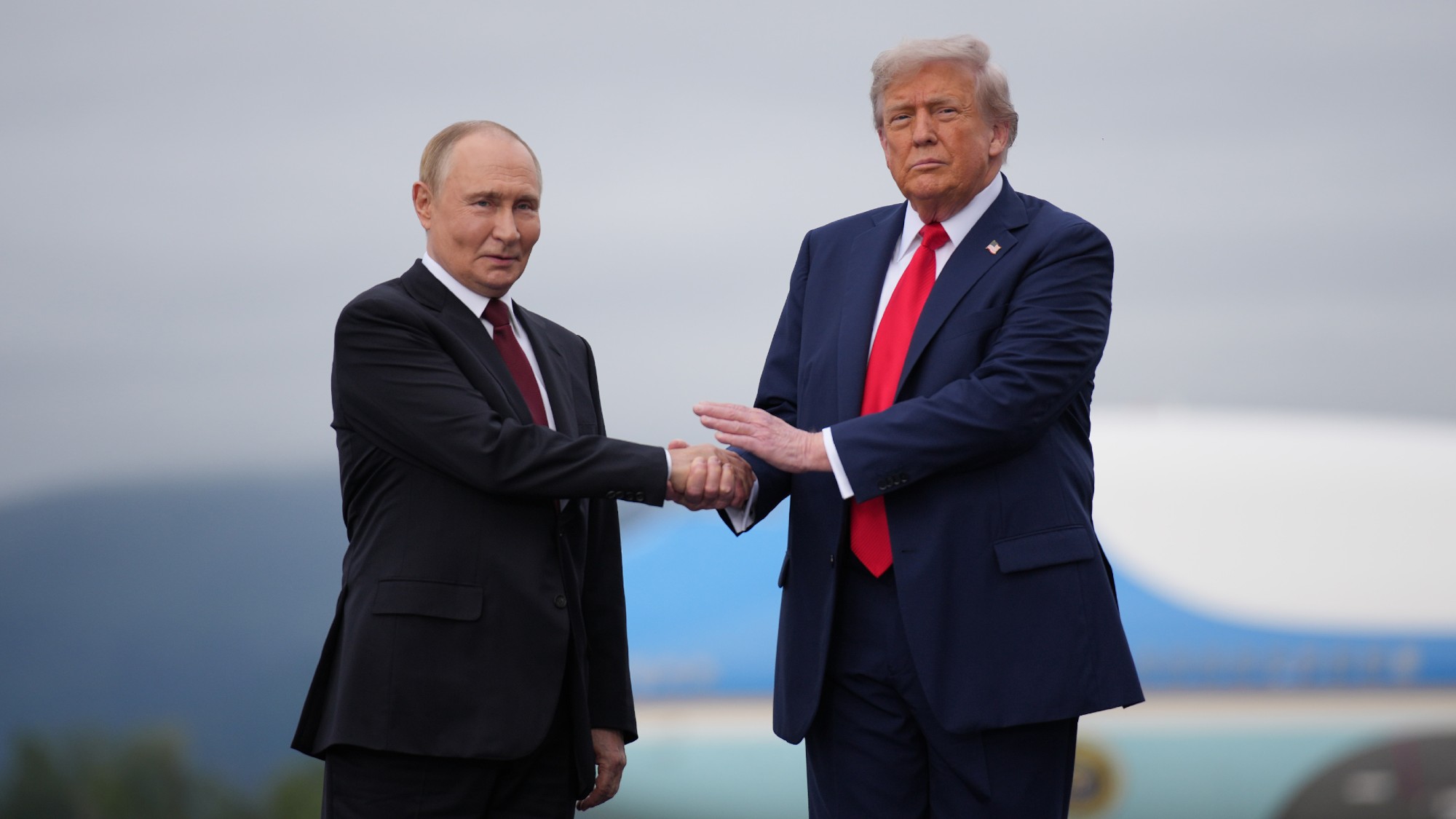How big is the Taliban threat in Afghanistan?
The group still poses a risk almost 17 years on from the beginning of the War of Terror

Taliban insurgents this week abandoned a short-lived bid to take over the capital of the western Afghan province of Farah.
The group flooded Farah city early on Tuesday, “forcing the governor to flee and driving security forces and officials into a handful of besieged compounds”, reported The Guardian.
Five civilians and 25 members of the country’s security forces died in the ensuing fighting, according to Afghan authorities, before Taliban fighters quit the city in the late evening.
The Week
Escape your echo chamber. Get the facts behind the news, plus analysis from multiple perspectives.

Sign up for The Week's Free Newsletters
From our morning news briefing to a weekly Good News Newsletter, get the best of The Week delivered directly to your inbox.
From our morning news briefing to a weekly Good News Newsletter, get the best of The Week delivered directly to your inbox.
“Officials immediately hailed the insurgents’ departure as a victory,” reports The New York Times. They said that hundreds of insurgents had been killed in the one-day assault and that the government’s response “proved it could beat back any Taliban initiative to take and hold territory”.
But one resident told the US-based newspaper that the Taliban’s retreat in fact highlighted the hold the organisation now has over the area.
“The Taliban managed to leave the city without a single shot being fired, and the night was calm,” said Abdullah Khan.
“It shows the utmost incompetence of our forces. The Taliban were wandering the Farah city streets openly without fear, as if they had lived there a long time, making jokes with their friends and telling citizens to stay calm and not worry.”
A free daily email with the biggest news stories of the day – and the best features from TheWeek.com
Farah province “is a key drug-trafficking corridor that borders Iran and the opium-growing heartlands of Helmand”, says The New York Times. The region has been the focus of the Taliban’s annual spring offensive – which the group launched last month by formally renouncing government calls for peace talks.
President Ashraf Ghani has offered the Taliban unconditional peace talks, accompanied by a ceasefire, recognition of them as a political party, and the release of some prisoners, among other incentives.
But almost 17 years on from the start of the War on Terror, how much of a threat does the Taliban pose in Afghanistan?
A strong hold
An investigation by the BBC earlier this year found that Taliban fighters were openly active in 70% of the country.
The insurgence were “in full control of 14 districts (that’s 4% of the country) and have an active and open physical presence in a further 263 (66%), significantly higher than previous estimates of Taliban strength”, according to the report.
The broadcaster also uncovered evidence of hikes in Taliban taxation across the country. In districts where they are openly present, the militants “force farmers, local businesses and even commercial goods convoys to pay them tax, while still leaving it to the government to foot the bill for basic services such as schools and hospitals”, says the BBC.
“They are charging people for the electricity that we supply,” the chief of a southern district told reporters.
Changing tide
Despite their advances, the Taliban “still lack national support for their cause”, says the Asia Times’s Ihsanullah Omarkhail. According to a survey on the national consensus, a majority of Afghans have rejected the Taliban. Fewer than 10% showed sympathy for the group, with most Afghans viewing the Taliban as the greatest challenge to their safety.
The group also appears to be losing the battle to enforce the idea that theirs is a “holy war” against foreign occupation. Last week, at a conference in Indonesia, 70 prominent Muslim scholars issued a fatwa, declaring that violent extremism and terrorism are against Islamic principles, in an effort to convince the Taliban to lay down its weapons.
Counterterrorism expert Javid Ahmed told Al Jazeera that the Taliban was concerned by the conference, the first of its kind.
“Any religious pronouncement against the Taliban or their extremist tactics could strip Taliban’s religious legitimacy, which is the last thing they want to hear,” he said, adding: “It may also marginally curb the Taliban recruitment.”
Pakistan pressure
The Asia Times’s Omarkhai argues that the Afghan government will struggle to combat the Taliban as long as insurgents “continue to enjoy safe havens in Pakistan”.
Without doubt, “Pakistan and its intelligence service have more influence over the Taliban than any other country or intelligence service”, the Brookings Institute think tank’s Bruce Riedl wrote in 2013.
One key problem is that “regional and global consensus around peace talks with the Taliban is still missing”, says the Asia Foundation’s Mohammad Shoaib Haidary.
“The US backs peace negotiations with the Taliban while at the same time the group enjoys financial, technical, and intelligence support from key regional countries like Pakistan, Iran and Russia,” he continues.
Since Donald Trump’s election, the relationship between Pakistan and the US has become strained, with the US president threatening to cut nearly $2bn worth of aid to Islamabad.
Nevertheless, “the relationship hasn’t exactly ground to a halt”, says CNN’s Michael Kugelman. Rather, Trump has attempted to force Pakistan to cooperate in tackling the Taliban through a series of “more modest measures”, which “are a far and weaker cry from the muscular moves threatened by the administration earlier”.
Ultimately, Washington’s policy so far “amounts to pressuring Pakistan with pinpricks”, Kugelman concludes.
“It’s a policy unlikely to achieve its main aim, which is getting Pakistan to target the terrorists on its soil that are killing Americans in Afghanistan.”
-
 Hong Kong court convicts democracy advocate Lai
Hong Kong court convicts democracy advocate LaiSpeed Read Former Hong Kong media mogul Jimmy Lai was convicted in a landmark national security trial
-
 How Bulgaria’s government fell amid mass protests
How Bulgaria’s government fell amid mass protestsThe Explainer The country’s prime minister resigned as part of the fallout
-
 Normalising relations with the Taliban in Afghanistan
Normalising relations with the Taliban in AfghanistanThe Explainer The regime is coming in from the diplomatic cold, as countries lose hope of armed opposition and seek cooperation on counterterrorism, counter-narcotics and deportation of immigrants
-
 Pakistan: Trump’s ‘favourite field marshal’ takes charge
Pakistan: Trump’s ‘favourite field marshal’ takes chargeIn the Spotlight Asim Munir’s control over all three branches of Pakistan’s military gives him ‘sweeping powers’ – and almost unlimited freedom to use them
-
 Is Europe finally taking the war to Russia?
Is Europe finally taking the war to Russia?Today's Big Question As Moscow’s drone buzzes and cyberattacks increase, European leaders are taking a more openly aggressive stance
-
 Pushing for peace: is Trump appeasing Moscow?
Pushing for peace: is Trump appeasing Moscow?In Depth European leaders succeeded in bringing themselves in from the cold and softening Moscow’s terms, but Kyiv still faces an unenviable choice
-
 Femicide: Italy’s newest crime
Femicide: Italy’s newest crimeThe Explainer Landmark law to criminalise murder of a woman as an ‘act of hatred’ or ‘subjugation’ but critics say Italy is still deeply patriarchal
-
 Brazil’s Bolsonaro behind bars after appeals run out
Brazil’s Bolsonaro behind bars after appeals run outSpeed Read He will serve 27 years in prison


